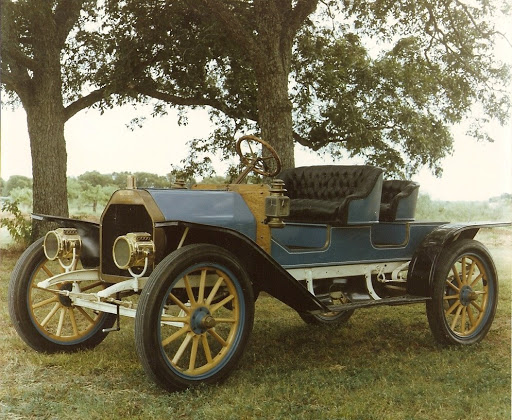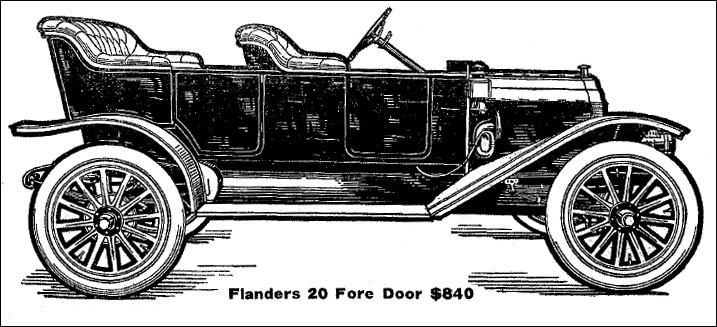Former Reeve Franklin E. Shaver loved cars and is fondly remembered for owning the first vehicle in Etobicoke some 112 years ago.
Shaver, who came from a prominent Etobicoke family, served as the 12th Reeve of the Borough of Etobicoke, which was created in 1850.
He served from 1906 to 1908, when he was defeated by prominent cattle breeder John Gardhouse, a farmer who co-founded the Royal Agricultural Winter Fair and Canadian Agricultural Hall of Fame inductee.
Back then the Borough of Etobicoke was growing and the businesses were booming.
Many residents had never been close to a car before that day in 1909 when Shaver pulled up in a shiny new Studebaker-Flanders automobile.
The auto was the first in Etobicoke and sported four cyclinders, water cooled engine, 20 horse power, 100-inch wheel base, 32-inch wheels and all-metal body.
It even had a selective sliding gear two speed transmission and reverse, shaft drive.
“The greatest automotive value the world has ever seen,” screamed the advertising for the vehicle. It sold for $750, a princely sum in those days.
The high-flying Studebaker Flanders company boasted to have 75,000 of the vehicles on the road and “every owner is an enthusiastic booster.”
“The Studebaker cars are built for honest everyday service, and will give you service – not excuses,” boasts its promotional materials. “From the moment your Studebaker Flanders is delivered, you have a car that is ready to go.”
Back then, there was little bus service and personal transportation was still primarily by horse-drawn carriage, according to the Etobicoke Historical Society (EHS). “Cars did not predominate in the rural areas until after the depression.”
Dundas Street and Lakeshore Road were both paved in 1917 and “other road were gravel or even mud,” they said.
There was good access to other towns, including downtown Toronto, by train. By 1917, the Toronto Suburban Electric Railway had opened passenger service from Keele Street to Guelph, passing through central Etobicoke.
Shaver’s family had done well. Patriarch Peter Shaver had arrived from Ancaster in 1830 and acquired 200 acres on the west side of Hwy. 427, between Bloor Street and Rathburn Road, according to the EHS.
He hired prominent Weston architect, William Tyrrell to design and build his home, which was completed in 1852. The house is Georgian in style and is built of red and yellow brick with a picturesque verandah across the front.
Many people know the historic “Applewood” house as the place where they or friends were married. It has hosted more than 12,000 weddings.
The Studebaker-Flanders was named after Walter E. Flanders who had been Henry Ford’s production manager in the early 1900s. Production was by The Everitt-Metzger-Flanders Company of Detroit.
Studebaker entered the automotive business in 1902 with electric vehicles and in 1904 with gasoline vehicles. For 50 years, the company established a reputation for quality, durability and reliability.
After an unsuccessful 1954 merger the company could not solve their cash flow problems and was forced to shut. The last Studebaker rolled off a Hamilton, Ont., assembly plant in 1966.
At one time more than 15,000 employees worked for the Studebaker automaker.

